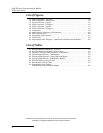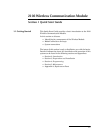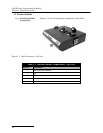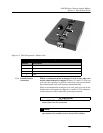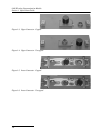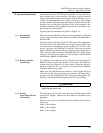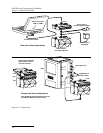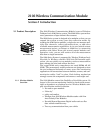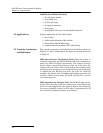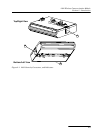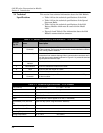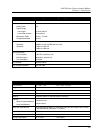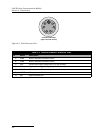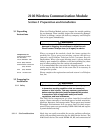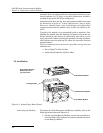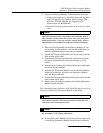
2102 Wireless Communication Module
Section 2 Introduction
2-2
2102 Wireless Module Features
• No cell phone hassles
• no monthly fees
• no FCC licensing
• no exposed antennas
•Long range
• Long battery life on two 6-volt alkaline batteries
2.2 Applications Typical applications for the 2102 include:
• Sewer Flow
• Inflow and Infiltration (I&I) studies
• Storm Water Runoff Monitoring
• Combined Sewer Overflow (CSO) Monitoring.
2.3 Controls, Connectors,
and Indicators
The controls, connectors, and indicators on the 2102 are shown in
Figures 2-1. Items referenced in the figure are briefly discussed
in Table 2-1.
LED Operation for the Remote Unit: When the remote is
seeking a connection, the LED will blink. When the connection is
made, the LED will light continuously. The remote will also
detect when a user direct-connects to the top of the unit. the
remote will turn off the radio section and go into standby mode
waiting for the connection to be completed. Once the connection
is completed (the RS-232 line must be quiet for about 60
seconds), the remote unit will update and normal operation will
continue. While in this mode, the LED will blink at a slower
two-second interval.
LED Operation for the Base Unit: The LED will light contin-
uously when the radio inside the module is on. Users should not
leave the unit plugged into the cigarette lighter after finishing
the survey. Standby current in this mode is approximately 40
mA, and will eventually run down a car battery.



